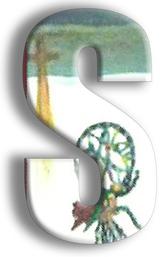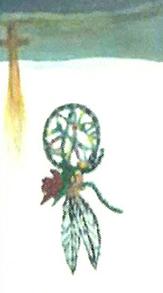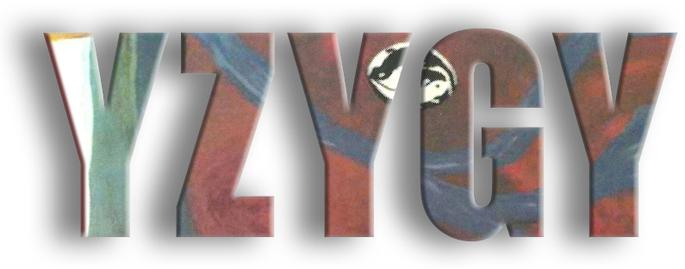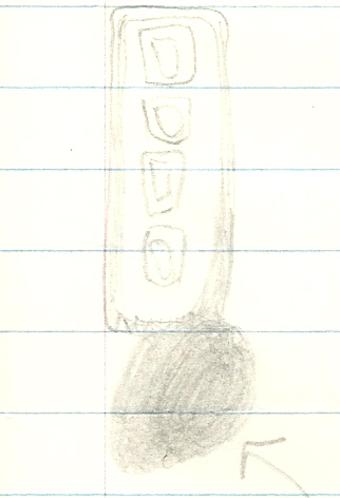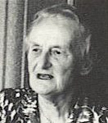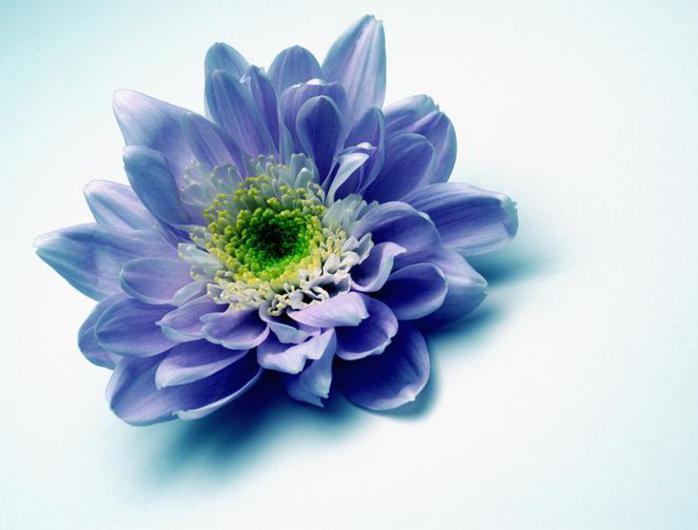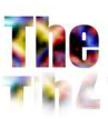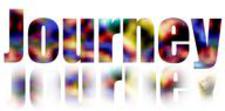MEMOIR LOGO CONCEPT: The aleph and a Sufi mystic inspired my creation and design of the syzygy logo, which I initially based on the symbolism of the yin and yang.
But the concept expanded when I first saw the aleph in Judith Cornell’s
Mandala Healing Kit, My inexplicable attraction to it led me to incorporate it into my logo before I knew what it meant.
I later read that the “Aleph (the first letter of the sacred Hebrew alphabet) embodies the primordial, divine potential of the universe. ... Aleph contains all the universe’s potential and all of its emptiness simultaneously. Aleph represents a dynamic process of movement from unity to diversity and back to unity,” Jennifer Judelsohn, Songs of Creation.
And the mystic poet Rumi inspired me to use the fire and water concept after I read The Question. Here is an excerpt:
“The presence is there in front of me. A fire on the left, a lovely stream on the right.
One group walks toward the fire, into the fire. Another toward the sweet flowing water.
No one knows which are blessed and which are not.
Whoever walks into the fire appears suddenly in the stream.
A head goes under water, and that head pokes out of the fire.”
LOGO ART: Cropped fire and water images from Free Images.
LOTUS LOGO: In spiritual and religious literature, “the lotus is a symbol for the macrocosm and the microcosm, the universe and man. The lotus represents the divinity of the cosmos as well as the divinity of man.
The lotus is the center of the infinite, omnipresent consciousness which connects with the consciousness of the universe. Through the intuition, one of man’s divine gifts, the spiritual student can see the infinite, omnipresent consciousness as the lotus flower within himself.”
LOTUS ART: Courtesy
Homestead, my website service provider. (Temporary art while I design of my own lotus logo.)
TO DOWNLOAD FREE SAMPLE CHAPTER OF SYZYGY:
THE MEMOIR
TO BUY MEMOIR
(Thru Amazon)
THE MEMOIR
CROSSING THE BRIDGE TO SELF
THE WEBSITE
THE MEMOIR
NEW!
I tried drawing the image of my soul but it looked like a hairball. But Dr. Sturm said a hairball is a powerful image, to form associations to it, so I did: “Hairball, clogged drain, water stops flowing, water, sustenance of spiritual and physical life, ocean, body of water, body of Christ, emergence, dedication of baby, baptism, rebirth, matrix, mother, moon, image of soul, hairball.”
I began “My Symbolic Quest” under the guidance of the late Dr. William A. Sturm, professor of philosophy at Virginia Wesleyan College, while taking his course, “The Symbolic Life: Creating a Synthesis,” in the spring of 1990. It was in his class that I made the exciting discovery of C. G. Jung’s work, including his book, Man and His Symbols. It was also in his class that I learned about Jung’s active imagination technique, which I used in my efforts to interpret the terrible, recurring dreams I had of dead or drowning babies.
AI Technique Bridges
Conscious and Unconscious
In 1913, Jung began developing a technique he coined “active imagination,” which he believed could serve as a bridge between our unconscious fantasies and fears and our conscious ego. The active imagination technique allows our unconscious, our inner Self, to speak to our conscious egos through visualization, automatic drawing, or any other art form of our choosing. But Jung repeatedly warned that communicating with one’s own psyche is not without danger. It is strongly advised that you seek professional guidance if you wish to practice this technique or any other technique that may be discussed herein.
Two-Minute Video
Sums up AI
Dr. Robert Hernandez, a licensed psychologist, does an excellent job of describing Jung’s active imagination technique in a two-minute video on YouTube. He explains what the AI technique is and how you can use it to open a dialogue with an image that may otherwise mystify you. In my efforts to figure out what my unconscious was trying to tell me through the imagery of the dead infant in my dreams, I chose automatic writing to practice Jung’s active imagination technique (under Dr. Sturm’s careful direction, of course).
Recurring Dead Baby Dream
I’m holding a dead baby, which I recognized as a newborn, although it’s greatly oversized, like the size of a toddler, and it’s heavy and hard.
Help Me Save the Baby Dream
An infant is lying on the floor. I realize it isn’t breathing or moving. [Unlike abnormal size and appearance in previous dreams, this infant looks normal.] A rectangular little box-like contraption that has three or four circles of numbers indicated to me that the baby was alive. But then they went blank. I ran around screaming, trying to get help. I wanted someone to help save the baby. The baby made a noise and moved, and I thought that babies wouldn’t do that if they were dead. I realized this baby MUST be alive, but I had trouble believing it.
First AI with Dead Baby
After minimizing the possibility of any distractions, I sat at the table, paper and pencil at hand, and relaxed. As I began to think about the dead infant, I unconsciously drew a vertical rectangle with four boxes in it, which have four more boxes in them. I also drew what looked to me like a hairball at the base of the rectangle.
Me: “Do you represent my dead husband?”
Dead Infant: “I represent the dead things in your life.”
(I noticed at that second that I had drawn the hairball, but was too afraid to talk to the hairball yet, so I discontinued the active imagination.)
Dr. Sturm’s notes about the hairball (his underlines):
The hairball seems very scary. Why? Presumably because it represents some muddle or unconscious confusion in your life that you are afraid to face but that you will have to face if you are to awaken the still “dead” (numb) parts of yourself. It tells you what you need: I am the dead parts (numb feelings?) in you. Dead parts could be:
• Feelings of self-worth that “died” long ago when you felt inadequate to cope with a crisis.
Feelings of self-worth that “died” long ago when you felt inadequate to cope with a crisis.
• Feelings of love, for yourself and/or others, that you have numbed because they were painful.
Feelings of love, for yourself and/or others, that you have numbed because they were painful.
• Willpower to break dependency patterns (smoking).
Willpower to break dependency patterns (smoking).
The child may contain all these latent strengths. But you forfeit them so long as you are afraid to address the muddle.
Second AI with Dead Baby
Me: “I dreamed of you a few years ago, and thought I knew what you represented.”
Dead Infant: I want— I want—. (The baby began to cry, then sniffled, and began sucking its thumb.)
Me: “Why are you crying?”
Dead Infant: (No response. Still sucking its thumb.)
Me: “Can you tell me what’s wrong?”
Dead Infant: I want—because I want my mommy.
Me: “Who is your mother?”
Dead Infant: Joyce.
Me: “But we were just with her for several days. We had a great visit—.”
Dead Infant: But it’s not the same.
Me: “I know. I know. But what can we do?”
Dead Infant: (No response. The baby rolled up in the fetal position, like in a cocoon, like the hairball image.)
Dr. Sturm’s notes about the infant and Joyce:
Here’s the real infant in you. Your real wants. Not the oughts. Not the fears. But the real longings for life and growth. “Mother” is not the historical mother, but nurture, security, love of oneself, which resembles the love that can also come from Joyce.
Third AI with Dead Baby
Baby: Crying.
Me: “Don’t cry. Please don’t cry,” I say again and again, tears welling up in my eyes, my heart breaking.
The baby is across from me as if someone is holding it up, but no one else is visible. Like something exploded, the baby began to snap its jaws together, making biting gestures toward me, like a mad jaws or a monster. Its back is to me but its neck is craned around so its face is facing me. It keeps snapping at me but it’s not close enough to bite me.
Me: “Please don’t be mad. Just talk to me. I love you. I’m sorry. Please tell me what’s wrong.”
I took the baby in my arms, cradling it, hugging it, comforting it. It punched me in the head and began strangling me. It began biting me in the shoulder and neck. There was no blood or physical pain, only emotional pain.
Crying myself, I told the baby to please calm down, that it had to calm down if we were to talk, that I was in control that—I don’t know—what I said after that. The next thing I knew I was singing a lullabye to the baby until it fell asleep on my shoulder.
Dr. Sturm’s notes about “Don’t cry.”
Let it cry. The tears are healing.
Dr. Sturm’s notes about snapping jaws and biting:
Here is some hidden self-anger. Ask “Why am I angry with myself in this way?
Dr. Sturm’s notes about “Don’t be mad.”
Again, stop trying to cover it up. Let it be mad. Deal with the anger.
Fourth AI with Image
of My Sphere
Avoiding the icky hairball, I decided to go for the gusto and approach that murky sphere that had been looming on the left side of my mental horizon since I could remember. I dimmed the lights and sat at the table, relaxing, breathing. Then I began. I focused all my attention on my mystery sphere. It responded spontaneously, like it had a mind of its own. (Not sure in what way it responded since I seemed to have skipped that little detail when I was writing this back then.)
Me: “What part of me do you represent.”
Sphere: Your oversoul.
Me: “What are you?”
Sphere: Peace. The ideal.
Me: “What is your function?”
No response.
Me: “Are you trying to give me a message?”
No response.
Suddenly images of decapitations and hangings flitted through my mind. Then I saw a rope yanked around a neck and an object slit its throat. I didn’t see a body or a head, only the neck. Frightened that I was capable in that moment of committing suicide, I regrouped, and then sought another avenue of questioning.
Me: “Is my ego too weak to handle communication with you right now?”
Sphere: Yes, it is.
Me: “What do I need to do to make it stronger?”
Sphere: Approach the hairball.
Well, fine! I relaxed again and summoned forth the image of the hairball, which readily appeared.
Me: “What’s your name?”
Hairball: Mike.
Me: “Mike?” I was really surprised because for some reason I expected a feminine name, a feminine voice, or at least a name more—mystical.
Hairball: Mike. Short for microphone.
I had to laugh.
Me: “Who do you speak for?”
Mike: Your unconscious.
Me: “Oh! You know, several times in the past I have had conversations with you. But immediately following I can’t recall what we said.”
Mike: You’re not supposed to.
Me: “Why?”
Mike: It would hurt you [pause]. Mystery [pause]. Body waste [pause]. The trinity [pause]. Unsnarling. Unraveling.
Images of hair blowing in the wind and tumbleweeds blowing through a desert wisped through my mind.
Mike: Hair is beautiful, though it is dead matter.
Me: “Are you trying to tell me that the dead matter in my life is beautiful?”
Mike: Yes. Savor them. Keep them alive. Teddy. Mother. Love. Innocence.
Me: “I thought I should let them die.”
Mike: They can never die. But your heart is dying. You let your feelings die. A certain sensitivity is lacking. Comb out the tangles in your life and your hair will grow long and beautiful.
Me: “What are the tangles in my life?”
Mike: You know what they are.
Me: “Marriage?”
Mike: Yes—as soon as possible.
Me: “I don’t like this conversation,” I said, thinking about how my boyfriend had recently proposed to me but I didn’t feel I was ready for marriage. “Can we talk about something else?”
Mike: That’s it. You’re always trying to run away.
Me: “I don’t see what marriage has to do with the oversoul.”
Mike: It’s the inner peace.
Me: “Are you saying if I get married I’ll have inner peace?”
Mike: You know it.
Me: “But, but—”
Mike: It’ll all work out.
Mike stopped talking and a knife-like object cut the hairball in half. Again and again, Mike kept jumping over the sharp object as if he were an entity apart from the hairball. Over and over again, the hairball splits in half then mends back together, while Mike jumps over it unscathed.
Mike: Get on with the project. Take it easy.
“If I get married I’ll have inner peace,” I announced to Dr. Sturm the next day. “My boyfriend asked me to marry him. But I said I wasn’t ready. But maybe my unconscious is trying to tell me to go ahead. If I do, I’ll have inner peace.”
“Before you make any major decisions,” he said, with a smile. “Why don’t you try thinking of wedding in symbolic terms. Jungians would say marriage in dreams often symbolizes the union of opposites, the union of the male and female aspects of the Self. Think about the wedding dream you recently had. It may be inviting you to a symbolic marriage. But you kept running and hiding.”
Of course! The syzygy, the joining or conjunction, conjugal, relating to marriage, the higher union, the good ol’ conjunctio oppositorium. By the end of the semester, my boyfriend and I had broke up, and lots of babies were thriving in my dreams and growing stronger every day. ♂ ♀
AI Helped Me to Interpret Dead Baby Dreams
“One must sit down and concentrate on seeing or hearing whatever comes up from the unconscious. When this is accomplished...the images must be prevented from sinking back again into the unconscious by drawing, painting, or writing down whatever has been seen or heard. Sometimes it is possible to express it best by movement or dancing” [1].
WARNING: Exploring one’s unconscious may be unsafe for some individuals.
Neither Syzygy: Crossing the Bridge to Self (memoir or website), nor Gabrielle Elizabeth Hayes, is responsible for your use of any material contained herein or any consequences incurred in that usage. If you should feel unsafe at any time while practicing dream re-entry, active imagination techniques, active meditations, or any other processes described anywhere on this website or in this memoir, stop immediately and consult a qualified physician or mental health-care expert. Jungian analyst Barbara Hannah also warns against using the active imagination technique with living persons: “As soon as there is any temptation to do this, we should stop and very carefully inquire again into our motives...it is likely we are trying to use the unconscious for our own personal ends...Here, we come to the great fundamental difference between using active imagination in the right or wrong way. The question is: Are we doing it honestly to try to reach and discover our own wholeness, or are we dishonestly using it as an attempt to get our own way? The latter use may apparently be very successful for a time, but sooner or later it always leads to disaster” [2]. Hannah also said that the active imagination should be allowed to unfold on its own: “The analyst should interfere with active imagination as little as possible. When I was being analyzed by Jung, he always wanted to hear if I had done any active imagination, but after listening carefully to any that I had done, he never analyzed it or commented on it at all” [3].
Practicing the active imagination technique can help you to initiate a dialogue with images in your dreams, which in turn, may open a dialogue between your ego and your psyche.
SOURCES
[1] Barbara Hannah, Encounters with the Soul: Active Imagination as Described by C.G. Jung.
[2] Ibid (p. 12)
[3] Ibid (p. 13)
© 1955–2015 Syzygy: Crossing the Bridge to Self. All Rights Reserved.
Barbara Hannah, Jungian analyst and close associate to Jung for 30 years
